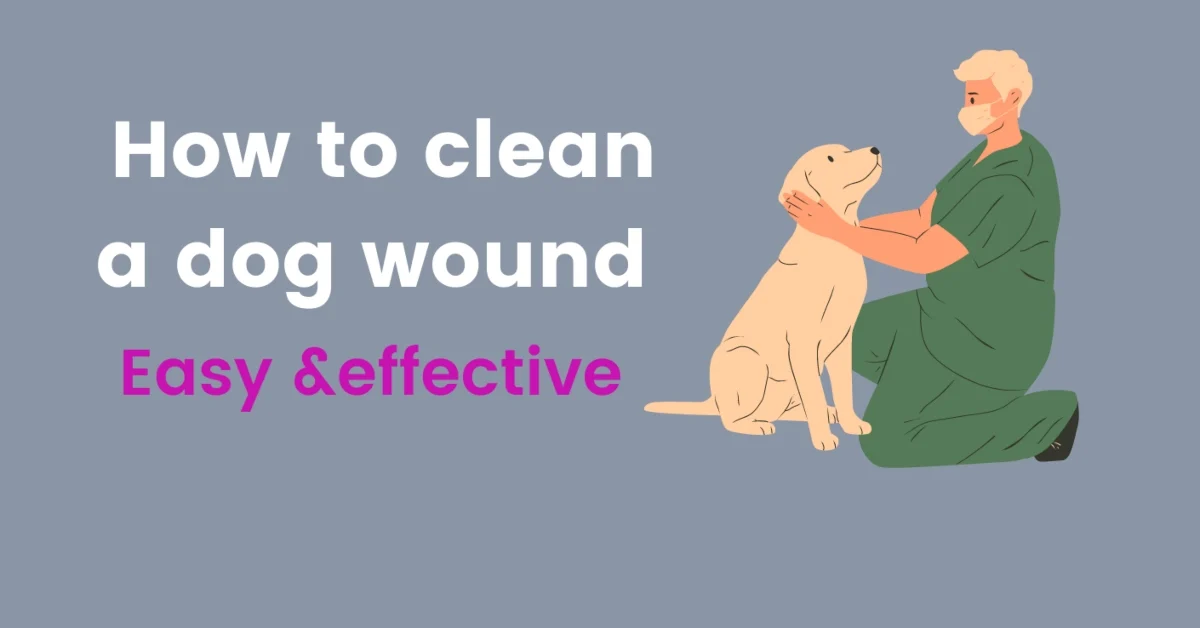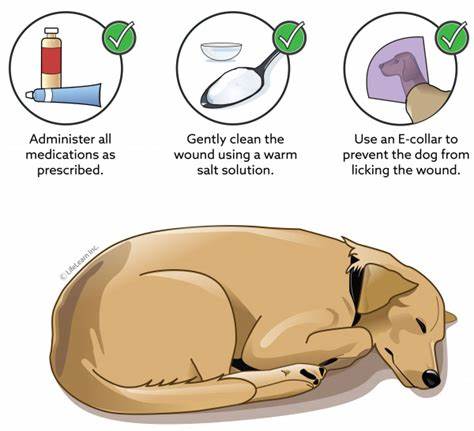Contents
Properly Cleaning Dog Wounds: A Guide for Pet Owners
Introduction
Cleaning dog wounds is an important skill for any responsible pet owner. Whether it’s a minor scrape or a more serious injury, knowing how to clean and care for your dog’s wounds can prevent infections and complications. In this article, we will explore the importance of wound cleaning, discuss the risks of untreated or improperly cleaned wounds, and provide a step-by-step guide on how to effectively clean dog wounds.
Background
Over the years, veterinary care and wound management for dogs have improved significantly. In the past, wound cleaning techniques were limited, and infections were common. However, with the progress of veterinary medicine, innovative wound cleaning techniques and products have been developed to improve outcomes and reduce complications.
Key Concepts
To understand the process of wound cleaning, it is important to be familiar with some basic terms. Antiseptics are substances that inhibit the growth of microorganisms, while disinfectants are agents that destroy or eliminate these microorganisms. Wound healing refers to the natural process by which the body repairs damaged tissues. Understanding different types of wounds, such as puncture wounds, lacerations, or abrasions, is also essential as each requires specific cleaning and treatment approaches. Additionally, the basic steps involved in wound cleaning include assessing the wound, stopping bleeding, and removing debris.
Main Discussion Points
Assessing the Wound
Examining a dog wound is crucial to determine the appropriate course of action. This involves evaluating the size, depth, and severity of the wound. By assessing these factors, you can determine whether the wound can be treated at home or if it requires veterinary intervention. It is also important to identify any foreign objects or contaminants present in the wound, as these can increase the risk of infection and delay healing.
Stopping Bleeding and Preventing Infection
Controlling bleeding is a crucial step in wound management. Techniques such as applying direct pressure or using a tourniquet can help stop bleeding effectively. Additionally, preventing infection is essential to promote healing. Pet owners should understand the importance of proper wound cleaning to minimize the risk of infection. Various antiseptic or disinfectant options can be used to clean dog wounds, but it is important to choose products that are safe for dogs and recommended by veterinarians.
Cleaning the Wound
Cleaning a dog wound requires a delicate approach. Gentle irrigation with a sterile saline solution is often recommended to effectively clean the wound. This helps remove any debris or foreign objects that may be present. While antiseptic solutions or hydrogen peroxide may be considered for wound cleaning, it is important to consult a veterinarian before using these products as they may delay healing or cause tissue damage in some cases.
Case Studies or Examples
Real-world examples of dog wound cases can provide valuable insights into wound cleaning techniques and outcomes. Before and after photos can showcase the effectiveness of proper wound management. By discussing specific wound cleaning techniques used in each case and the resulting outcomes, pet owners can better understand the importance of timely and thorough wound cleaning.
Current Trends or Developments
Recent research findings have shed light on advancements in wound cleaning for dogs. These include the use of advanced dressings that promote healing and provide a barrier against infection. Antimicrobial agents have also shown promise in preventing infections in dog wounds. Keeping up with these trends can help pet owners make informed decisions regarding wound cleaning techniques and products.
Challenges or Controversies
The use of certain wound cleaning techniques or products may be subject to controversies or differing viewpoints. It is important to address these concerns and provide a balanced perspective. Additionally, dealing with aggressive or fearful dogs during the wound cleaning process can present challenges. Pet owners should seek professional help or advice in such situations to ensure the safety of both the dog and the person cleaning the wound.
Future Outlook
The future of wound cleaning practices for dogs looks promising. Advancements in technology and new treatment options can revolutionize wound management. As pet ownership and awareness continue to increase, there will likely be a greater emphasis on the importance of wound cleaning for the overall well-being of dogs. Pet owners can expect more innovative products and techniques to improve wound healing outcomes.
Conclusion
Properly cleaning dog wounds is essential for the health and well-being of our furry friends. By understanding the importance of wound cleaning, assessing wounds accurately, stopping bleeding, and effectively removing debris, pet owners can provide optimal care for their dogs. Seeking professional veterinary advice for complex or severe wounds is crucial. Remember, a clean wound is a step closer to a healthy and happy dog.


